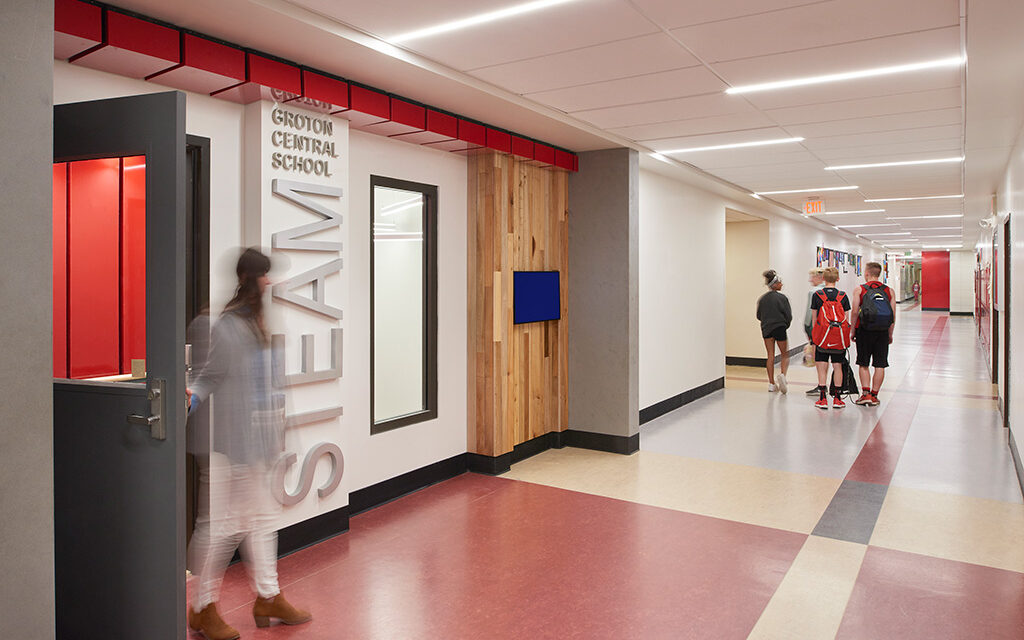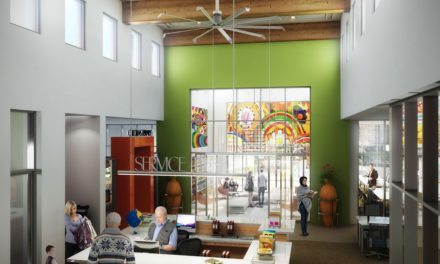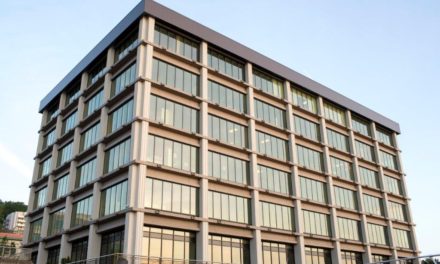Members of the design team at Ashley McGraw Architects are looking forward to the first day of school this year at the Groton Central School District (GCSD) in rural New York, some 45 miles south of Syracuse. No, they’re not pining to meet their new home-room teachers, but rather to hear the responses to the STEAM learning center they designed which will officially open September 4 for district-wide use.
The $4.8 million center is a renovated 8,000-square-foot Science, Technology, Engineering, Arts, and Math (STEAM) lab and shared-learning space. Ashley McGraw merged the district’s curriculum with the overarching concept using form, light, and materials to create a modern learning environment where both teachers and students will feel valued, focused, and inquisitive.
“As opposed to a traditional classroom where students are taught in a rigid box-like setting, this STEAM center was designed as a dynamic interactive place that engages students and teachers in learning,” said Ashley McGraw’s Mike Frisina, an architect and design tech manager at the firm.
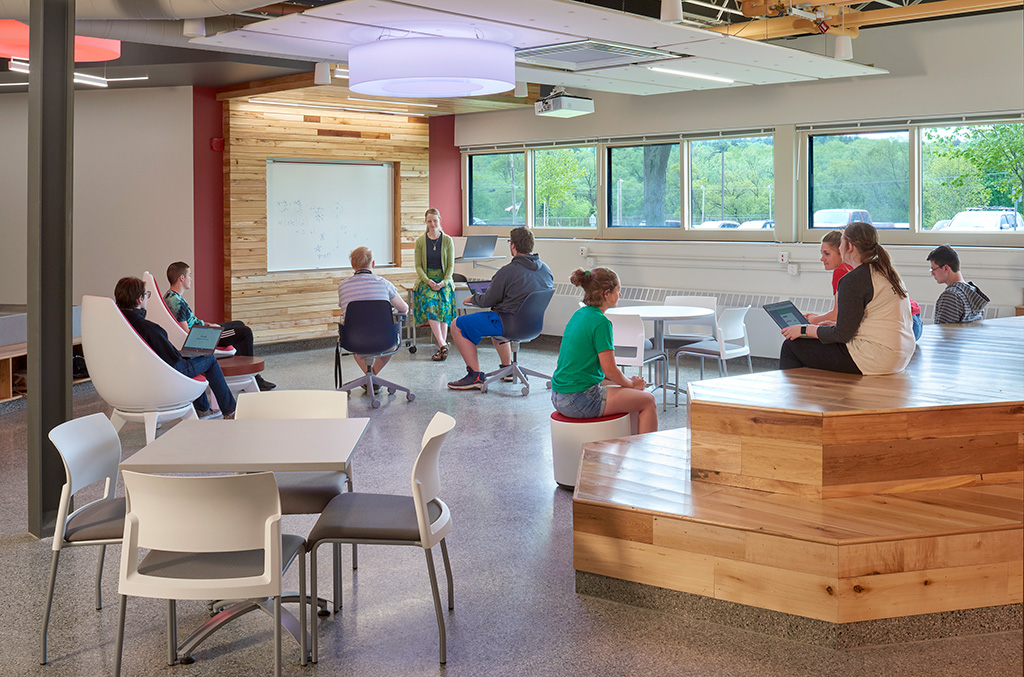
Photo credit: © David Lamb Photography
The center was created, in collaboration with school district Superintendent Margo Martin (see Groton CSD video), to be a place where students want to hang out. The former dreary basement at Groton Junior-Senior High School is now a colorful, sun-lit, biophilia-influenced lounge fitted with high-tech, enhanced screens, work stations, adaptable furniture, and state-of-the-art energy-efficient lighting and HVAC systems.
Nearly every surface is a writing surface, including the glass walls that surround enclose the space, to encourage spontaneous creativity and ideation.
The center’s floor plan features transparent and flexible spaces of varying sizes. This mirrors the design of contemporary higher-education and corporate office environments which encourage independent work as well as spontaneous collaboration, skills that students need to develop to be successful in the 21st-century.
“We believe young people will come here and discover their passion, develop their foundational skills, and utilize the center’s resources so they can be successful entering college or the workforce,” said Catherine Wolfe, a senior interior designer at Ashley McGraw.
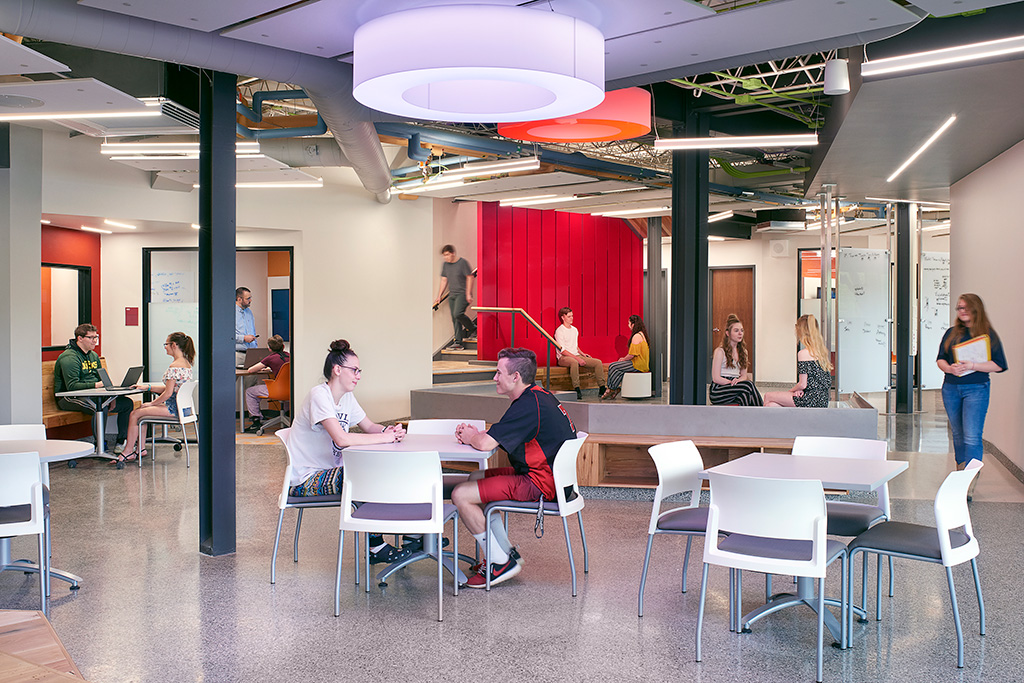
Photo credit: © David Lamb Photography
Identifying Students’ Needs
According to 2017-2018 New York State Education Department school report card data, less than 30 percent of Groton students in 7th and 8th grade were proficient in English, math, or science. School district officials shared their goals to change that with Ashley McGraw, and the firm responded with a design scheme for the STEAM center that supports project-based learning.
The multi-purpose space—complete with a photo, video, and music editing studio—will be used for a variety of educational programs that are industry-aligned, including: Building Trades, Computer Science, Engineering & Electronics, Agriculture Technology, and Communications & Media Arts.
GCSD’s Martin has gathered data, including Google surveys and social and emotional learning (SEL) evaluations, which measured how students feel about themselves as learners. And teachers who are part of the STEAM program have reported seeing “completely different students,” as compared to the same students in the general education courses.
“Beginning in December 2018, during the soft-opening period of the center, we observed that students and faculty alike have utilized the space in every way we had hoped, and in ways that we couldn’t have anticipated,” Frisina said. “Groton CSD STEAM Coordinator Mick Levick has been instrumental in informing the students of the concept of the STEAM lab and giving them the freedom to explore its possibilities. Mick has stated that the variety of the spaces and learning environments in the STEAM lab has given the students and the faculty the flexibility to ‘choose your own adventure’ in their educational programs. They have been able to transform the spaces to fit the needs of their tasks on a day-to-day, class-to-class basis.”
“The space has directly elevated their excitement about education,” Wolfe added.
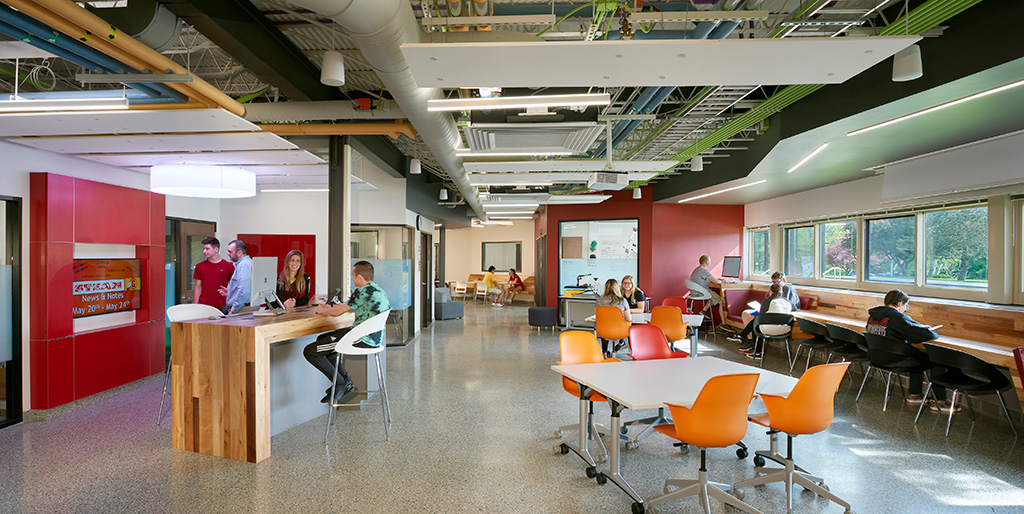
Photo credit: © David Lamb Photography
Benefits Beyond the School
“This STEAM lab is poised to become a regenerative project for us,” Wolfe said. “And by that, we mean that we expect the center will work toward helping students develop new skills and also help restore the fabric of the surrounding community on environmental, social, and economic levels.” Community organizations in the small town of 5,950 residents have rallied around the redesigned space as they recognize it has the possibility to become an economic engine.
An agricultural steering committee is now promoting the expansion of an agricultural program there; STEAM experts are offering their services as guest speakers and adult education courses are also being offered there during afterschool hours. “During the STEAM center open house in late April, I had the opportunity to speak with members of the community, many of whom voted on the project referendum. They were equally as excited about the space, the curriculum, and the future that the STEAM lab holds,” Frisina said.
“Most lamented about not having a space like this when they were in school, and nearly all wanted to be a part of the program through adult learning classes. One community member told me that she wanted to learn how to use Adobe Illustrator and build robots. Another told me that she wanted to ‘officially enter the 21st Century’ and learn how to use a computer and a cell phone. “But none of this would have been possible without the vision of Superintendent Margo Martin. Her vision of a project-based curriculum, where students from all disciplines and class sizes can work together throughout the year is where the real strength of the STEAM lab lives,” Frisina said.
Added Wolfe, “We like to think that the “A” in STEAM is not only for ‘arts’, but also for ‘accessibility.’ We hope this center continues to evolve into not just something exclusively for students but as a space for everybody, and that celebrates the learner as an individual.”

